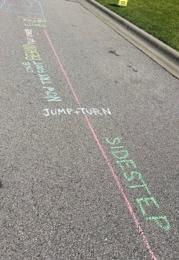Improving Self-Regulation
- Logan Garner
- Feb 28, 2024
- 2 min read

What is Self-Regulation?
Self-regulation is understanding and managing emotions, behaviors, and reactions to everyday situations. Self-regulation plays an important role in a child’s ability to cope with their feelings and use strategies to calm themselves when they are experiencing strong emotions such as anxiety or frustration.
Common signs that a child lacks self-regulation skills:
Struggle with transitions - leaving the playground, stopping one activity to move on to another, changes in routine
Frequent meltdowns - overreacting to small changes in schedule including crying, kicking, and screaming
Difficulty playing with friends - struggle to share toys, play with same-aged peers
Some strategies that can help improve self-regulation include:
Deep breathing: Take a deep breath in through the nose and breathe out slowly through the mouth (pretend to blow out candles to make it fun!)
Deep pressure: Give the child squeezes to their hands, arms, or legs and teach the child to squeeze a stuffed animal or hug themselves (use a weighted blanket or lap pad for extra comfort)
Count to 10: Slowly count to ten before reacting (take a deep breath between each number)
Ask for a break: Create a break card - if the child is upset allow them to take a 3-5 minute break to play with a fidget toy, etc.
Pause, rewind, and play: Teach a child to figure out what they are feeling (pause), why (rewind), and how to make a good choice (play)
Consider reading more on the impact of emotional regulation with this evidence-based article.
Resource:
Lin, S. C., Kehoe, C., Pozzi, E., Liontos, D., Whittle, S. (2023). Research review: Child emotion regulation mediates the association between family factors and internalizing symptoms in children and adolescents - a meta-analysis. Journal of Child Psychology & Psychiatry, 65(3), 260-274. https://doi.org/10.1111/jcpp.13894




Comments